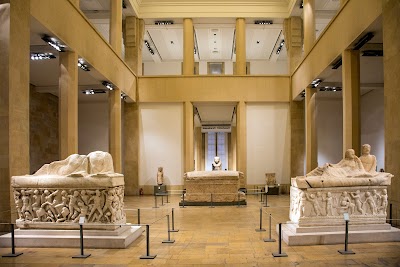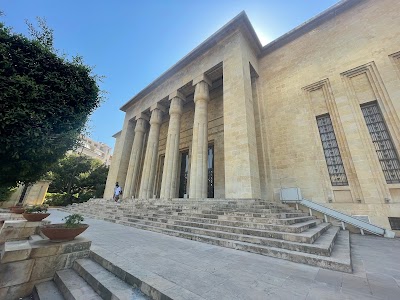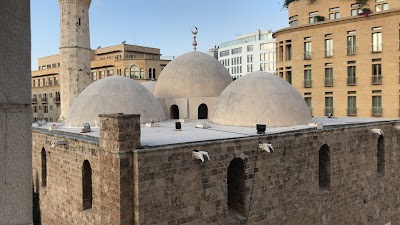Beirut National Museum (المتحف الوطني في بيروت)
Overview
The Beirut National Museum, nestled in the heart of Beirut, Lebanon, is a historical and cultural treasure that provides visitors with an intriguing insight into the region's rich heritage. Founded in 1942, this museum is the principal archaeological institution in Lebanon, showcasing a diverse array of artifacts that span thousands of years, from prehistoric times through the Ottoman period.
The museum's history is as captivating as its collection. During the Lebanese Civil War (1975–1990), it found itself on the front lines and suffered significant damage. Many valuable artifacts were hidden in concrete vaults or relocated to safer locations to protect them from looting and destruction. Following the war, an extensive restoration project was initiated, and the museum joyfully reopened in 1999, symbolizing resilience and cultural revival.
The architecture of the Beirut National Museum beautifully marries classical and modern styles. Its exterior features an impressive neoclassical facade, while the interior is thoughtfully designed to create a serene environment that enhances the visitor experience. The layout is user-friendly, guiding guests through a chronological arrangement of artifacts that takes them on a captivating journey through time.
Among the museum's most significant collections are its Phoenician artifacts. Lebanon's Phoenician heritage is integral to its history, and visitors can admire stunning sarcophagi, intricate jewelry, and various tools and everyday objects that showcase the remarkable craftsmanship and extensive trade networks of the ancient Phoenicians.
A highlight of the museum is the 'Beirut Marble Laws', a collection of Roman-era legal texts inscribed on marble slabs. These texts offer unique insights into the governance, social norms, and daily life of ancient Beirut, known as Berytus. They stand as a testament to the city's long-standing legal and educational traditions, which included one of the most renowned law schools of antiquity.
On the ground floor, extensive collections from multiple periods await, including the Bronze Age, Iron Age, Greek, Roman, and Byzantine eras. Visitors will be captivated by the impressive statues, mosaics, and stelae, many of which are intricately carved and remarkably preserved. Noteworthy highlights include well-preserved Roman mosaics depicting mythological scenes and everyday life, showcasing the artistry and cultural influences of the time.
Ascending to the upper floor, visitors will find medieval artifacts from the Islamic, Crusader, and Mamluk periods. This section reveals the diverse cultural influences that have shaped Lebanon over the centuries. Notable exhibits include finely detailed manuscripts, ceramics, and textiles that illustrate the melding of artistic traditions during these dynamic historical periods.
A particularly striking exhibit is the collection of funerary art, which includes sarcophagi adorned with detailed carvings often depicting scenes from Greek mythology or the lives of the deceased. The 'Lady of Tyre' is one such sarcophagus that draws considerable attention, showcasing the artistry of its time through intricate carvings.
For those interested in Lebanon's more recent history, the museum's collection of Ottoman artifacts provides a rich glimpse into the cultural and social life during Ottoman rule. This includes weaponry, clothing, and domestic items that reflect the daily lives of people during this extensive period.
In addition to its permanent exhibits, the Beirut National Museum regularly hosts temporary exhibitions, educational programs, and cultural events aimed at fostering a greater understanding and appreciation of Lebanon's heritage among locals and tourists alike. The museum's gift shop offers replicas of its most famous artifacts, books, and souvenirs, making it a perfect stop for mementos of your visit.
The Beirut National Museum is more than just a collection of ancient artifacts; it is a testament to the rich tapestry of civilizations that have left their mark on Lebanon. Whether you are a history enthusiast, an art lover, or simply a curious traveler, a visit to this museum offers a rewarding and enlightening experience.
In summary, the Beirut National Museum stands as a beacon of cultural preservation and education in Lebanon. It celebrates the country’s diverse and storied past through its extensive and well-curated collection. Visitors are invited to explore, learn, and appreciate the myriad influences that have shaped modern Lebanon. The museum’s resilience and dedication to cultural preservation make it a must-visit destination for anyone seeking to understand the deep historical roots of this vibrant region.







